What conditions does a good crypto project need to meet?
Original title: "DAOrayaki | 17 Important Factors When Measuring Crypto Projects"
Written by: Ehsan Yazdanparast
Compilation: Hahaho
Fundamental analysis is one of the indispensable investment and trading strategies in the blockchain/cryptocurrency space. Therefore, the DAOrayaki community compiled the article "17 Important Factors When Measuring Crypto Projects". Below, are 17 relevant factors, and I'll share some real-world examples, so let's get started!
white paper
source code
Application scenarios
holding
competitor
Product Roadmap
Technical Support
founding team
Token Economic Model
degree of decentralization
Scalability
safety
market indicator
On-chain metrics
listed exchange
governance model
social media
#1 — White Paper
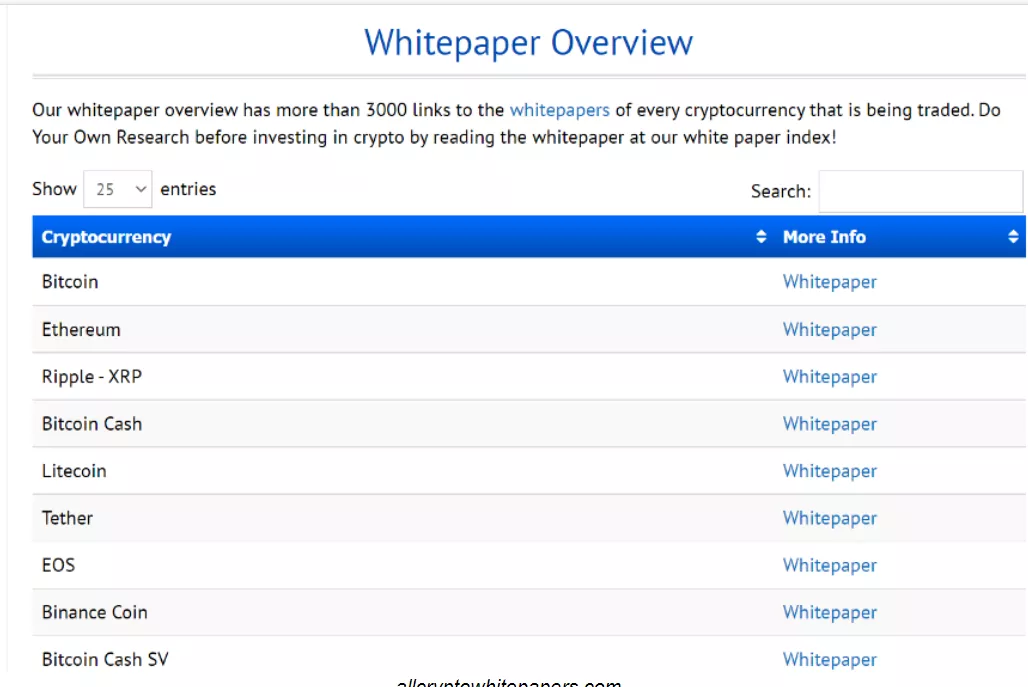
allcryptowhitepapers.com
A white paper is the official document of a blockchain project, through which users can obtain relevant information about the project. These include but are not limited to:
Founding Team Information
Technical Support
Token Model
consensus model
Expected milestones
Partner
Application scenarios
#2 - Source Code
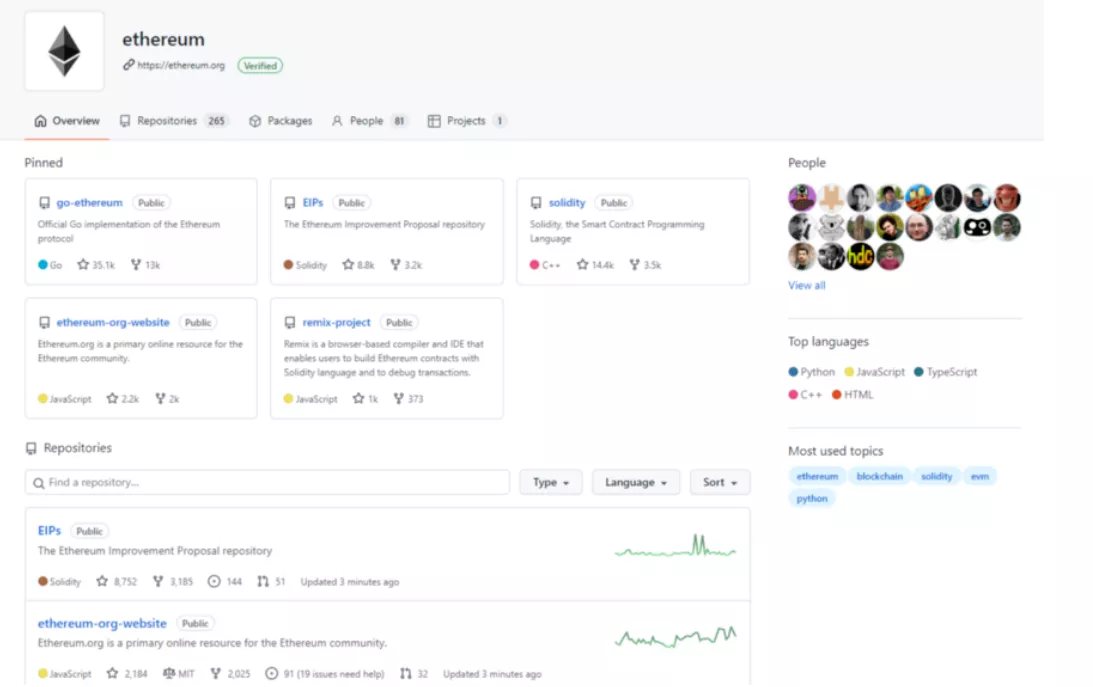
Source Code Database Example (Ethereum)
Many blockchain projects are open source so that any user can browse the code and evaluate quality and security. Of course, this requires some programming and related technical knowledge. Meanwhile, some useful information available from open source repositories include:
Developer activity (features, etc.)
audit
smart contract
transparency
Open Source Blockchain Projects: Risks and Opportunities
A coin has two sides, one good and one bad for most people. It all depends on the choices they make.
media network
#3 — Application Scenario
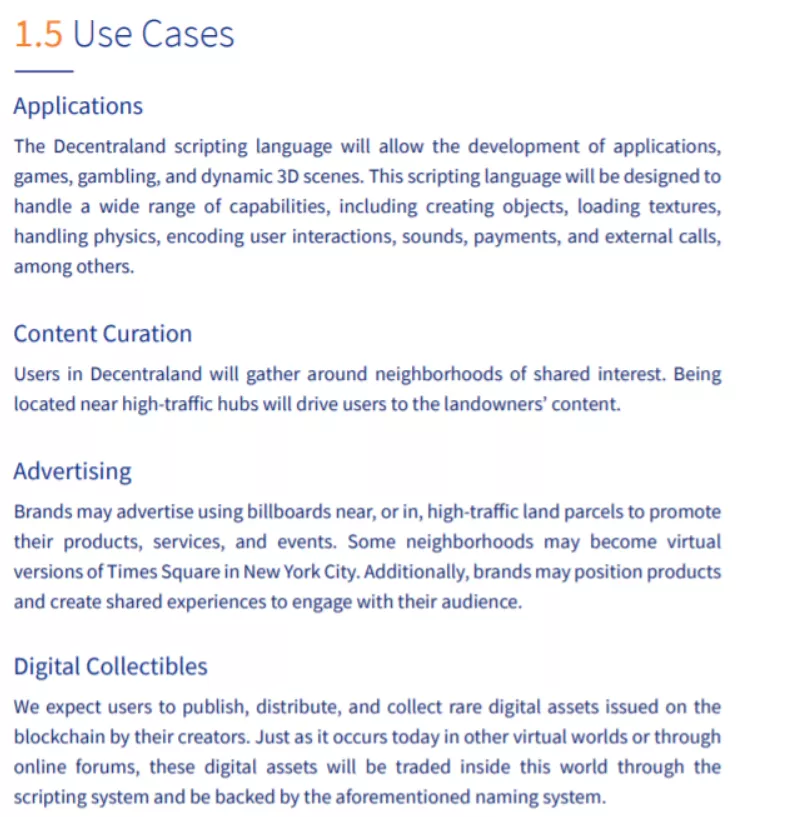
Token function example (MANA)
In general, every blockchain and token tries to solve real-world problems. for example:
DeFi tokens correspond to decentralized financial solutions.
Governance tokens correspond to the process of platform users participating in governance.
Game (metaverse) players use tokens in the game.
Cryptocurrencies are used as payment scenarios.
A key to fundamental analysis is a clear understanding of the purpose of the coin. Therefore, when reading the official documentation of the project, it is best to look at the empowerment of tokens (such as DeFi platforms).
#4 — Holds

Example of Active Addresses (Litecoin)
This is a reality in the cryptocurrency space: a project that seems technically promising can also disappear if retail investors or institutions don’t buy in. Conversely, a project that everyone feels is bad, with good marketing and widespread promotion and adoption, may see huge growth.
So when choosing a project, you have to consider "network effects" and the growth level or potential of the token.
#5 — Competitors
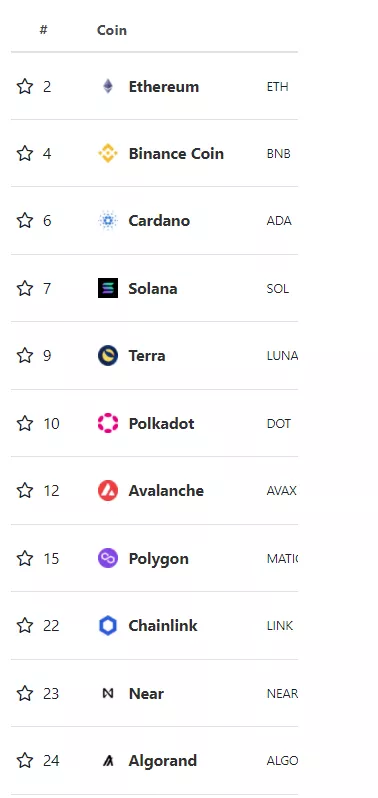
Competitors on the same track (smart contract platform as an example)
Blockchain broadly includes a set of solutions that provide decentralization, scalability, and security. In the blockchain space, there are many subcategories:
pay
NFT
Oracle
Metaverse/Games
Smart Contract Platform
Layer 2 solutions
Web 3
file storage
Each of these tracks has its own head project. So when you want to invest in a project, it is best to first investigate which track it belongs to and see if the project is competitive.
#6 — Product Roadmap

Product Roadmap (Cardano as an example)
A good project has a clear mission and vision, as well as a roadmap. These roadmaps can usually be found in the whitepaper or on the project party's social media. Here's what's available through the roadmap:
Feature announcements (e.g. staking, smart contracts)
New projects on the platform
new partnership
event or seminar
New version of the dApp or platform
Improvement plans for the network (decentralization, scalability, security)
Some projects publish roadmaps on white papers (which may be updated from time to time). There are also projects that prefer to let users "go with the flow", of course, avoid such projects as much as possible.
#7 — Technical Support
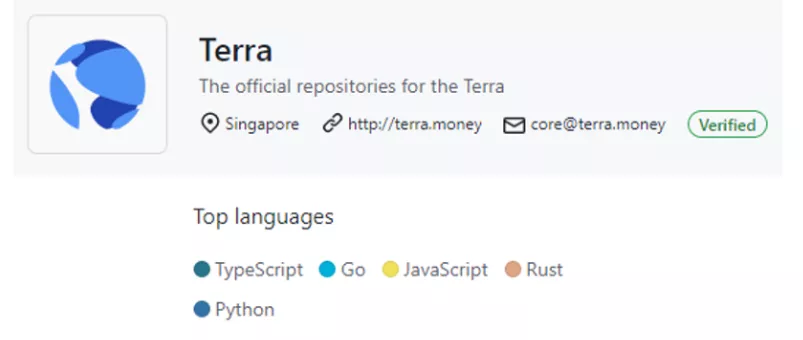
Technical support for a project (Terra for example)
Blockchain infrastructure, smart contracts and dApps are developed based on programming languages and blockchain libraries (frameworks). Therefore, if you want to have a clear understanding of what is going on behind the scenes of a project, it is necessary to examine the tools and techniques behind the project.
These sections include:
Programming language (e.g. Solidity, Rust)
Blockchain library/framework (e.g. Truffle, Remix)
Front-end technologies (e.g. React, Angular)
testing/monitoring tools (eg ethscan)
It's a good idea to examine the tool suite used in the project and determine whether the set of tools and techniques supports the project's intended goals.
List of programming languages and frameworks used in 41 crypto projects
Mainnet, smart contracts, GUI, improvement suggestions, wallets, dApps, APIs, etc.
#8 — Founding Team

Algorand project founding team
The key factor in whether a project has attention is the founder and team behind the project.
Let's see some examples:
The Cardano (ADA) project was founded by former Ethereum co-founder Charles Hoskinson.
The Polkadot (DOT) project was founded by former Ethereum co-founder Gary Wood.
The main person in charge of the Algorand (ALGO) project is a famous blockchain professor at MIT named Silvio Micali.
The Avalanche (AVAX) project was born at Cornell University.
This is not a requirement for a successful project. However, with a good founder and development team, our expectations for a project will grow accordingly.
#9 — Token Economic Model

Token distribution for Uniswap, Avalanche, Solana and Elrond
Token economic model research is an important section in fundamental analysis. Simply put, tokenomics research can help you better understand the monetary “policy” behind a project.
Here are some caveats:
Check circulation, total supply and maximum supply. These data provide basic information about supply and demand.
Check if the token has "burned" or something similar to fight inflation.
Understand the "token policy" behind the project, experience the "consensus mechanism" of the project, and keep an eye on the official announcements and trends of the project.
Look at the token distribution to check if the distribution is "fair".
Whether the project party has initiatives to incentivize users and provide users with passive income.
Everything you need to know about token economics
Supply, burn, monetary policy, token distribution, earnings, etc.
#10 — Decentralization
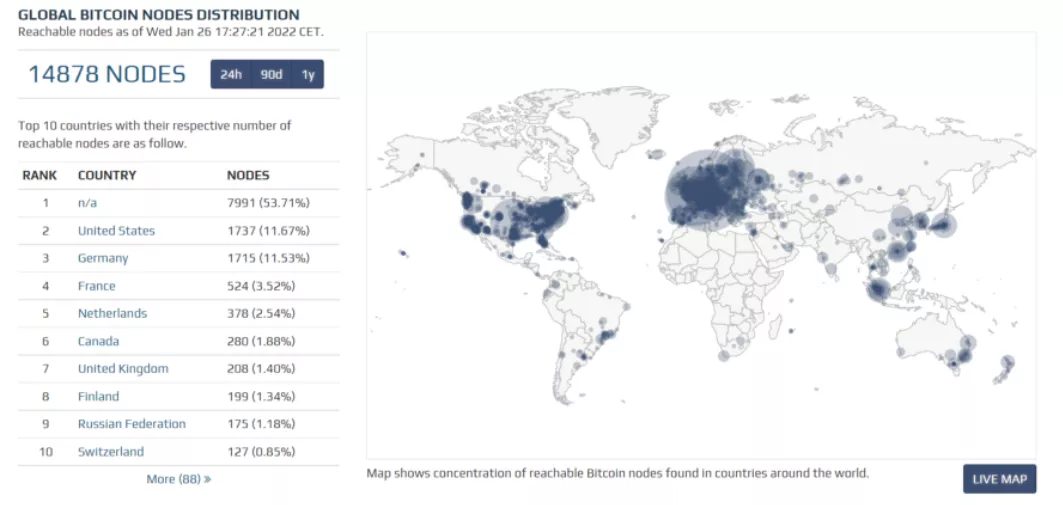
Global Bitcon Node Distribution
The ultimate goal of blockchain technology is to achieve true decentralization. Therefore, the degree of decentralization plays a crucial role in fundamental analysis.
To investigate the degree of decentralization of a project, the following factors need to be considered:
The number of nodes participating in the consensus process
The company's influence on network governance
The impact of the project's software developers on network governance
Number of wallets in the network, number of active addresses
Token distribution
whale activity
Bitcoin is by far the most decentralized network known. All other networks and projects have some degree of centralization.
#11 — Scalability
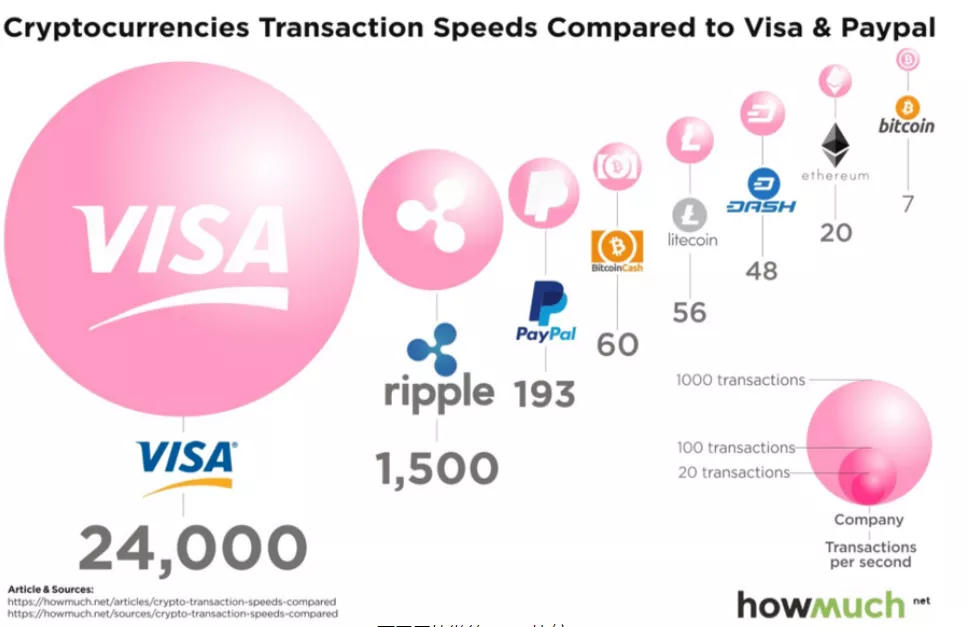
TPS comparison of different blockchains
Another essential feature of blockchain projects is scalability. When looking at scalability, two factors need special attention:
Throughput: The amount of processing per second
gas fee: the cost of executing a transaction on the network
Smaller projects or more centralized projects usually have higher throughput or lower fees. Therefore, the centralized nature of these projects and the number of active users on the platform require special attention.
Ethereum Layer 2 Scaling Solutions Demystified
Sidechains, optimistic and ZK rollups, channels, and more.
#12 — Security
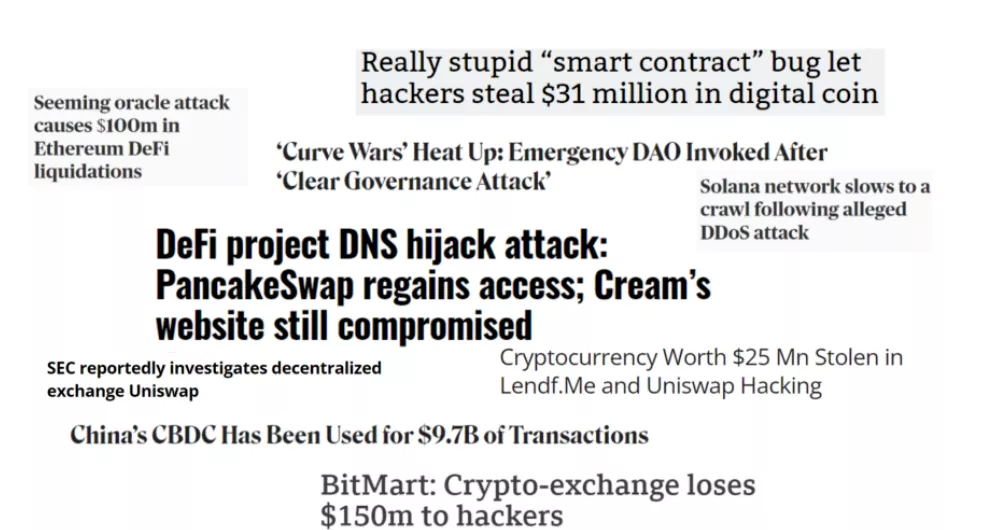
Some hacked cases
Security is also a major concern for blockchain-related solutions. No one wants to invest in or use a project with a significant vulnerability risk.
Here are the caveats:
If you have relevant code knowledge, you can review it yourself.
Check to see if the project you are interested in has a solid security audit.
Find out if the project has been hacked in the past through news or announcements on social media.
Whether the token of the project you are interested in is listed on a major exchange means that the project meets "minimum" security standards.
9 DeFi risks you should know about
Smart contract risk, governance attacks, CBDC, regulations and more!
#13 — Market Indicators

Market Indicators (Cosmos example)
Websites such as CoinMarketCap or CoinGecko list basic information about the token.
market value
Trading volume (24 hours, 7 days, etc.)
Maximum Supply, Total Supply, Circulation
These metrics represent the overall market sentiment towards the coin and can also be used to assess the value potential of the coin.
#14 — On-Chain Metrics
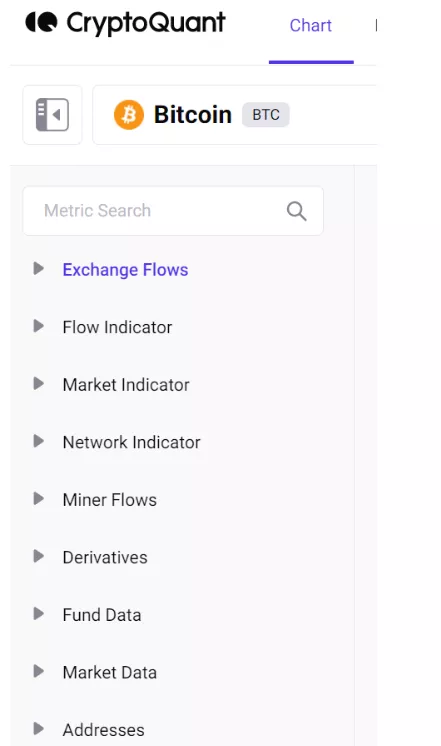
On-chain data analysis platform (CryptoQuant as an example)
On-chain analysis refers to analyzing the activities of users on the chain. The following can be viewed using on-chain tools:
inflow
outflow
Miner Movement (PoW Assets)
Number of wallets
Active address
Trading volume
fluidity
Usually charts or candlesticks do not represent this information visually, so platforms such as CryptoQuant collect this data.
There are hundreds of on-chain indicators, so it is necessary to select the practical indicators that are truly valuable.
#15 — Listed on exchanges
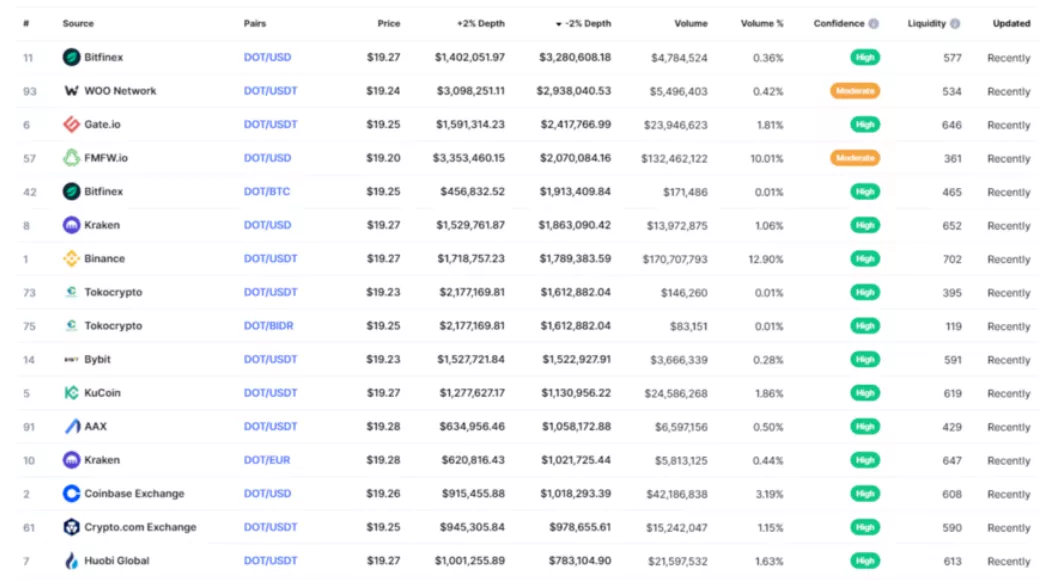
Exchange listing (DOT as an example)
A straightforward way to save time in the fundamental analysis of a project is to use the exchange as a reference.
Exchanges such as Binance, CoinBase, KuCoin or Kraken have strict requirements for project listing. So if a project is already listed on these exchanges, that means you can trust it "for now".
Of course, this does not mean that you can only trade assets listed on the exchange, it is just that this factor needs to be taken into account in the investment decision-making process.
#16 — Governance Model
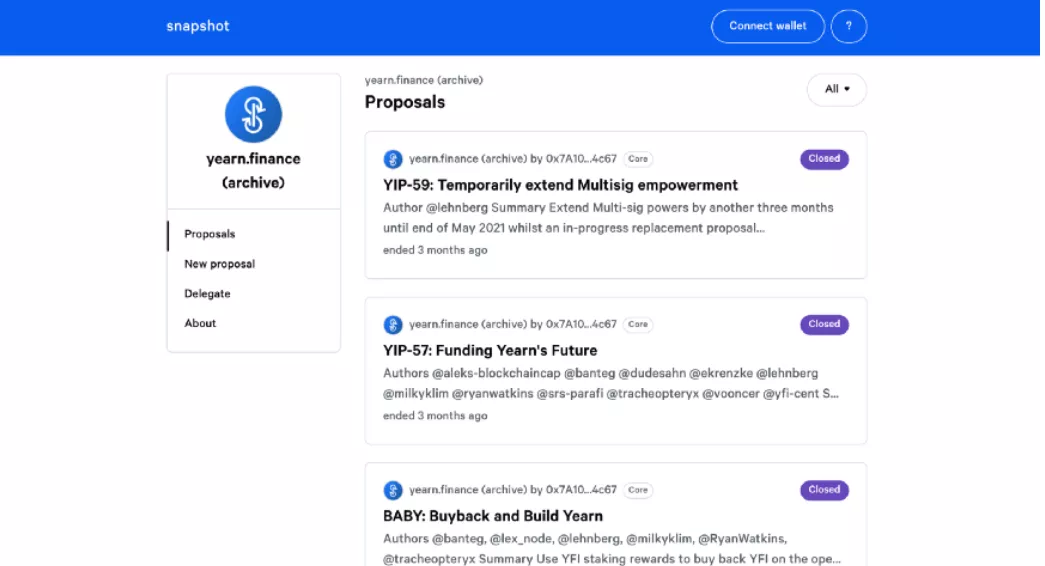
Projects with governance policies (yearn.finance as an example)
Governance is a challenging issue in the blockchain industry. On the one hand, projects need to be decentralized, but on the other hand, projects need different usage scenarios to empower their tokens. So some mechanism is needed to clarify the governance process.
The most popular of the current governance models is the use of "governance tokens". The purpose is for users to buy tokens and then get voting rights based on their own holdings (e.g. one token for one vote).
At first, this might be an exciting idea. However, in practical applications, a series of problems have arisen. For example, if someone holds a large amount of governance tokens, he can "hijack" the governance process so that the end result is beneficial to him.
#17 — Social Media
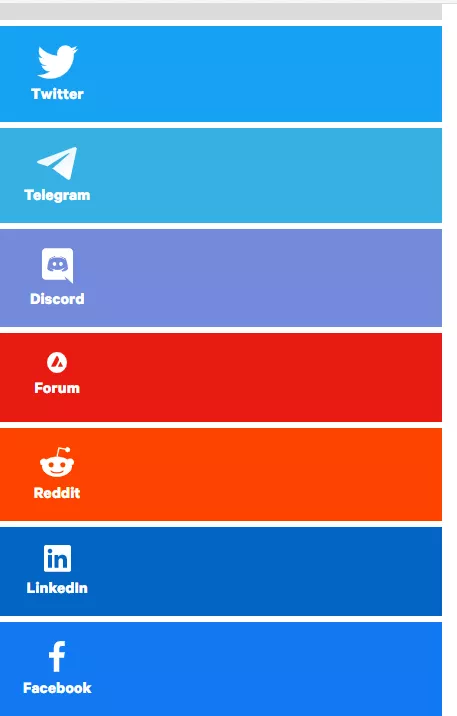
Avalanche's social media pages
A successful project requires a good image to maintain. This helps them promote their own solutions.
The following are the social media platforms commonly used by blockchain projects:
Discord
YouTube
Medium
Blogs/Websites
Summarize
Above, we have introduced 17 important factors for fundamental analysis. Let's summarize:
✔️ Good projects have detailed white papers.
✔️ Good projects open source their source code.
✔️ Good projects empower their tokens.
✔️ Good projects have broad consensus among the user community.
✔️ A good project will guarantee competitiveness.
✔️ Good projects have product roadmaps.
✔️ Good projects use advanced technology.
✔️ A good project has a strong founding team behind it.
✔️ Good projects have fair and transparent token models.
✔️ A good project has a high degree of decentralization.
✔️ Good projects are highly scalable.
✔️ Good projects have high security.
✔️ Good project market indicators have less volatility.
✔️ The indicators on the chain of a good project fluctuate less.
✔️ Good projects are listed on more big exchanges.
✔️ Good projects have fair governance models.
✔️ Good projects promote themselves through social media